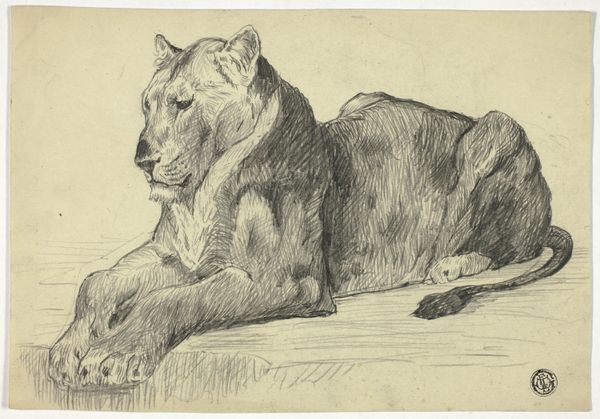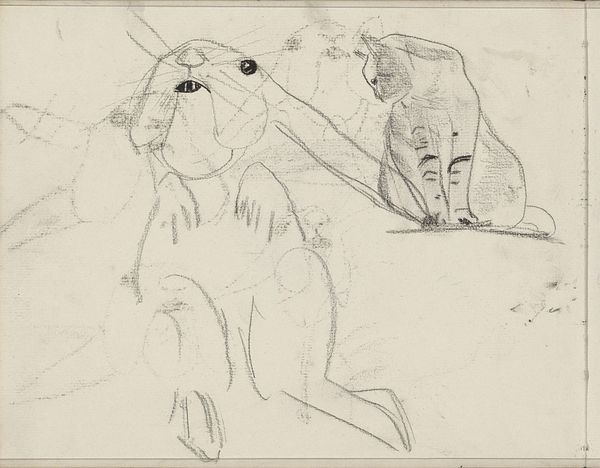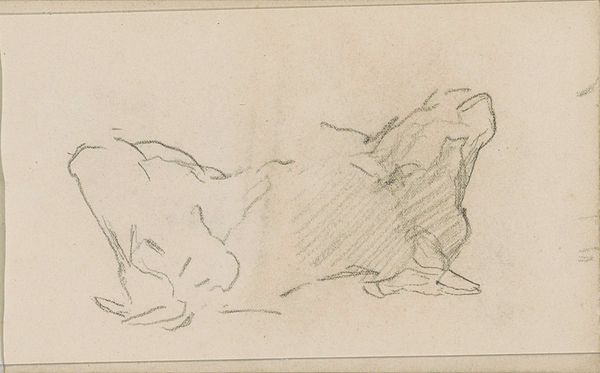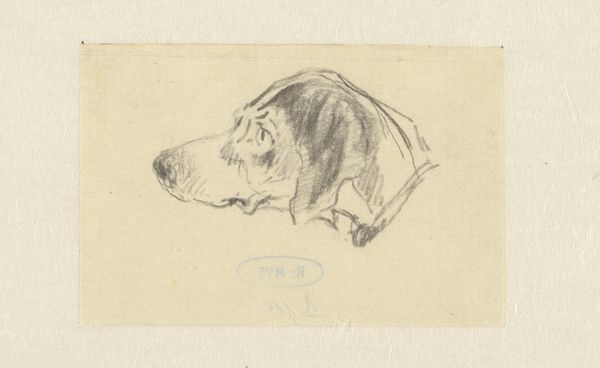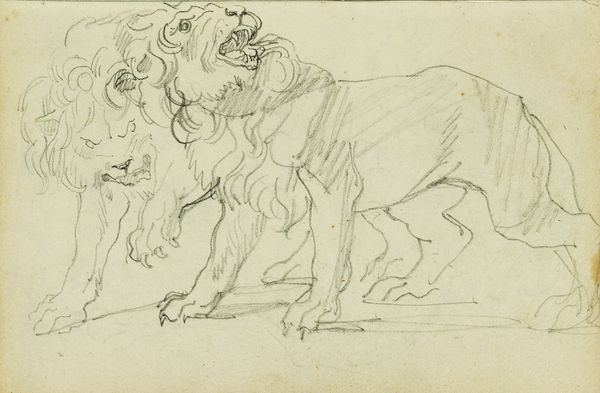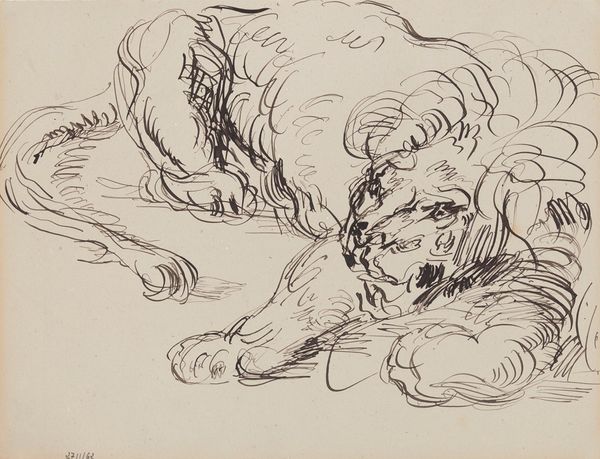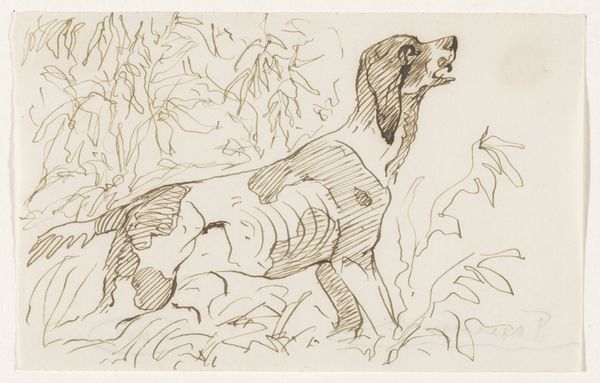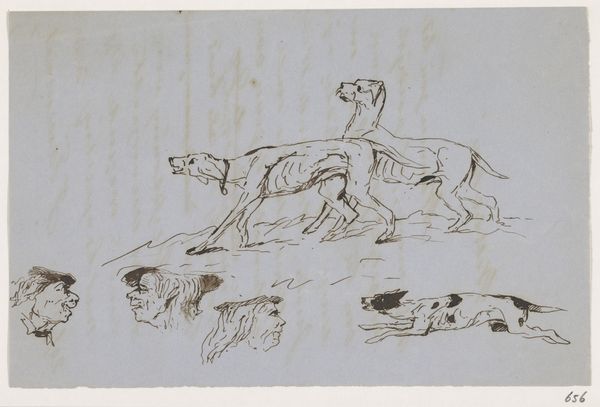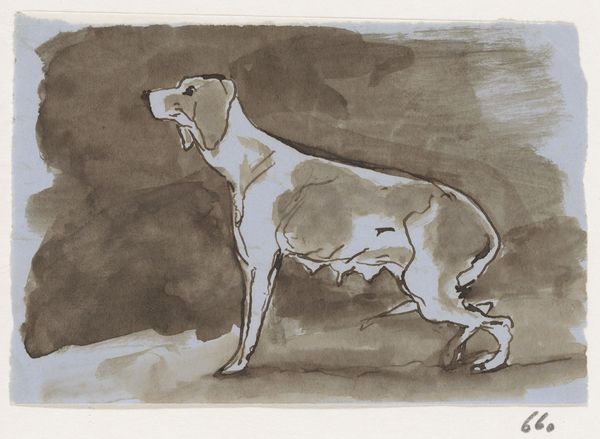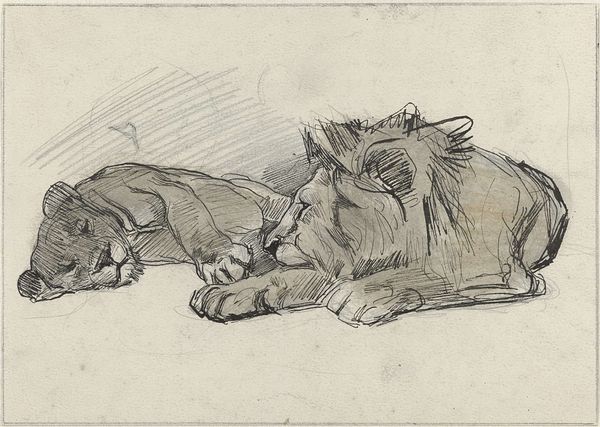
drawing, pencil
#
drawing
#
pencil sketch
#
figuration
#
pencil
#
realism
Dimensions: height 221 mm, width 297 mm
Copyright: Rijks Museum: Open Domain
Editor: This is Guillaume Anne van der Brugghen’s pencil drawing, "Zittende leeuw," placing its creation somewhere between 1821 and 1891. The swift lines give it an unfinished quality, yet it conveys the powerful presence of the lion so well. What do you see in this sketch? Curator: The lion, throughout history, has held powerful symbolic weight—royalty, courage, pride. Consider how ancient civilizations, like Egypt, incorporated lion imagery into their monuments and myths. Even today, it evokes leadership. The sketch seems to tap into that deeply ingrained cultural understanding. Editor: Yes, and even though the sketch feels unfinished, it manages to convey such strength. Why do you think the artist chose to focus on this particular animal? Curator: Perhaps the artist was interested in the psychological impact of the lion – its association with primal instincts, raw power. Look at the way the head is positioned. Is it roaring? Mourning? Is he trapped in some kind of boundary represented by the crude lines? This tension invites us to confront our own relationship with the wild, untamed aspects of ourselves. Editor: That’s interesting. It could be both a roar of power and a cry of frustration. Curator: Indeed. The drawing resonates because the lion has echoes in our shared cultural memory and evokes a dialogue about strength and confinement, wildness and control. Even in its sketch-like form, it’s loaded with potential narratives. Editor: It is amazing how a simple sketch can trigger so many ideas. Curator: Precisely. Symbols evolve and gather new layers of meaning across time. Art like this allows us to trace those ever-shifting connections. I found this truly eye-opening!
Comments
No comments
Be the first to comment and join the conversation on the ultimate creative platform.

